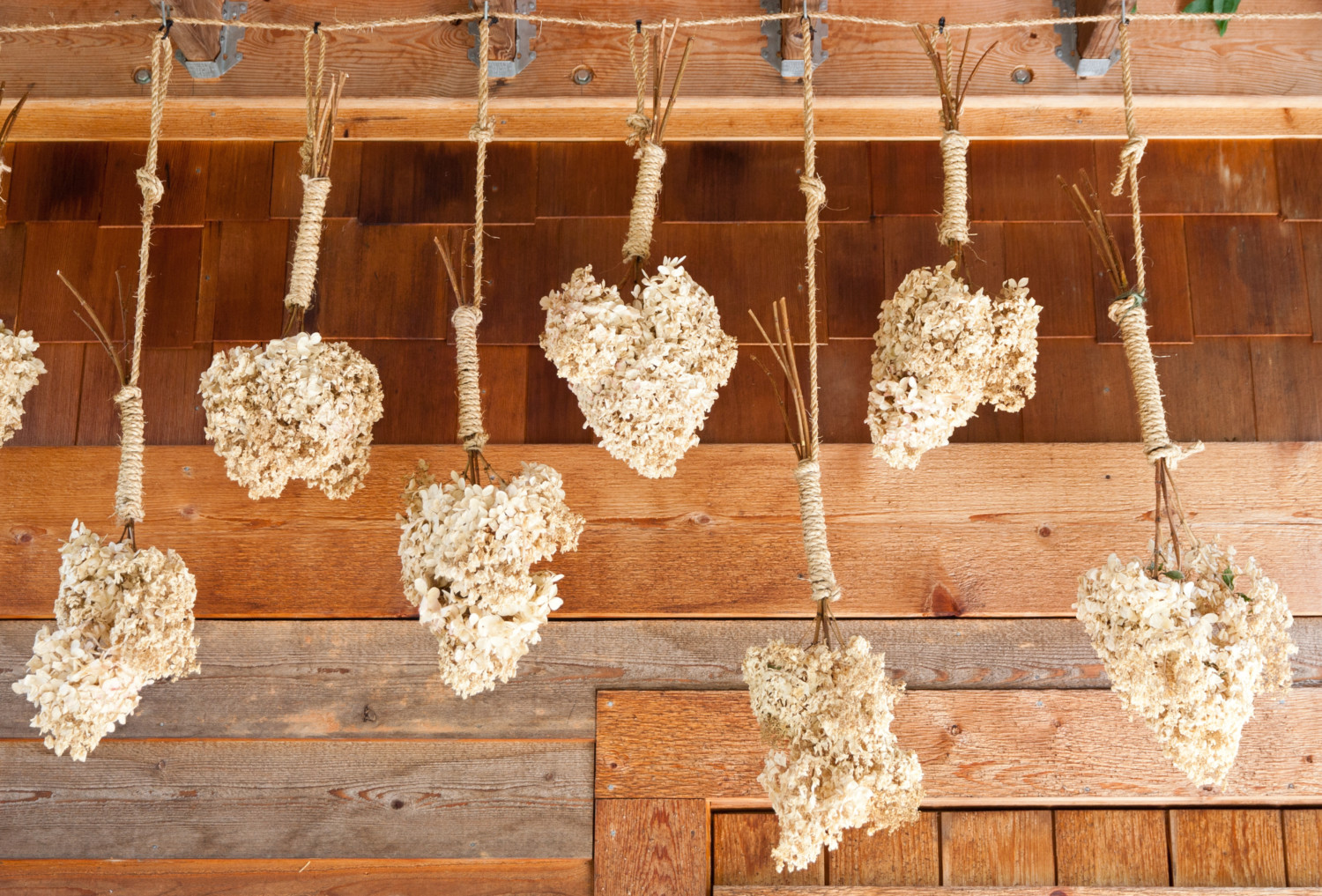The products and services mentioned below were selected independent of sales and advertising. However, Simplemost may receive a small commission from the purchase of any products or services through an affiliate link to the retailer's website.
When summer has moved on but you miss all of its floral glory — especially the unabashed beauty of hydrangeas — there’s a way to keep those blooms “alive” for another year.
Drying out hydrangeas preserves their beautiful shape and much of their color so you can have summery, mood-lifting arrangements around your home even in the dead of winter.
You can learn a few techniques on how to dry hydrangeas properly.
How To Dry Hydrangeas By Putting Them In Water
One way that might seem odd for “drying” out hydrangeas is to cut the blooms and put them in water. The key to the “water drying” method is to cut blooms when they are just past their prime but not yet fading in color. At this time, the petals are developing a papery feel and the tiny flowers are beginning to open. If you cut hydrangeas when they are at maximum bloom, they will be more likely to wilt rather than slowly dry out.
Bob Vila’s site recommends clipping hydrangeas mid-to-late morning when the dew has tried off but the flowers haven’t been languishing under the hotter midday sun. Trim the stems at a 45-degree angle and peel off all leaves before putting them in a vase since leaves don’t dry well. Leave 12-18 inches of stem on the hydrangea.

The trimmed blooms should be placed in a container with a small amount of water and spaced out so blossoms don’t touch each other. They’ll dry more quickly this way. Place the vase out of direct sunlight to prevent fading but in a spot with good airflow.
Let the water dry up gradually as the blooms also dry. The water helps the drying hydrangea flowers retain more color by slowing the browning of the blooms. The water method takes several weeks.

How To Dry Hydrangeas Using Silica Gel
You can also dry hydrangea using silica gel. The desiccant removes moisture from its surroundings by absorbing nearly 40% of its weight in water. That’s why you’ll find silica gel packets in lots of household packaging from food to shoe boxes. It’s also why silica powder is effective in drying flowers like hydrangeas.
Color-changing silica gel will indicate when it’s absorbed all the moisture it can take. Silica gel can then be dried out in the microwave or an oven and reused.
To dry hydrangeas using silica gel, pour the powder into a container, place your flower in the gel, and then pour more powder around and on top of the hydrangea so that it’s completely covered. Ideally, use a container with an air-tight lid to speed along the drying process.
You can also more quickly dry a hydrangea in the microwave. Put an open container with the silica-covered bloom in the microwave along with a cup of water and heat it on medium for one minute at a time. It should take just a few minutes for the flowers to completely dry.

How To Dry Hydrangeas By Hanging Them
A third way to dry hydrangeas is to hang them upside down by a piece of string and let them dry slowly over several weeks. This technique works best if you can hang the flowers in a dry, dark space but won’t work well in an area with high humidity. Once they’re fully dried, you can spray them with a fixative such as hairspray to help them retain their color.
You can also press-dry hydrangeas inside a book or a microwave or using an iron or flower press. but the flowers won’t retain their original shape this way. They would look great in a glass frame, though!

Have you tried any of these how-tos for drying hydrangeas? Which looks the easiest to you?
This story originally appeared on Simplemost. Checkout Simplemost for additional stories.


